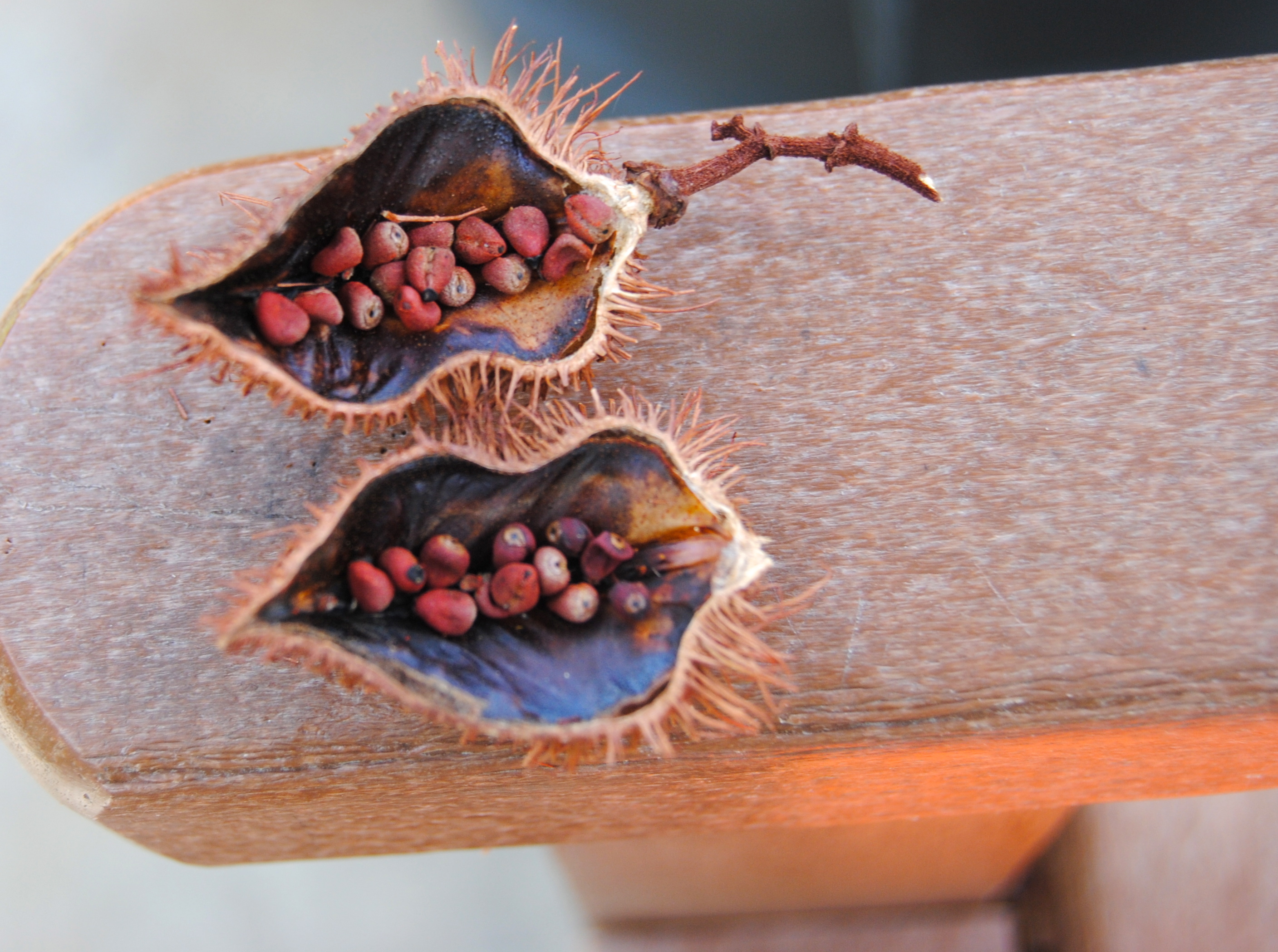Lipstick Tree : Annatto Used in Food
The seed is admired in Hispanic cuisine for its earthy flavor. It is mainly used in Latin American and Caribbean dishes. It has a peppery scent and tastes slightly sweet. Annatto is seen in a lot of Guatemalan and Mexican food as well as in Filipino cuisine. The annatto spice is often added to rice, beans, meats, stews, soups, and tamales.
The bright seeds are used as a food coloring. The food coloring made from the tree, known as Bixin, is said to be high in vitamin C and is used to color margarine, and cheeses such as the Red Leicester and the Cheshire. Bixin is also used to color smoked cod, herring and rice, among other foods from around the world. For example, around Bombay, Bixin is used by milkmen, who add the coloring to buffalo milk. By adding dye, the buffalo milk looks more similar to regular cow’s milk. This spice is sometimes called “a poor man’s saffron” because it mimics the rich golden color of saffron when added to dishes (though not its taste!).
The seeds can be used to make achiote oil. First the seeds are cooked in hot oil until the skins dissolve. Then, when the oil is bright yellow, the seeds are removed and the oil is used for cooking. Adobo paste is also commonly used for cooking and is prepared by boiling the seeds in water to produce a thick paste, which is strained and dried in the sun. It is documented that the Maya used these methods of cooking to prepare little cakes made from the paste. Both the seeds and paste of the lipstick tree are available in many Latin American markets today.
Here is an example of a recipe one may see in Central America that uses Adobo paste:
It is called Chicken Mole Adobo
http://citymama.typepad.com/cityfood/2006/11/chicken_mole_ad.html


